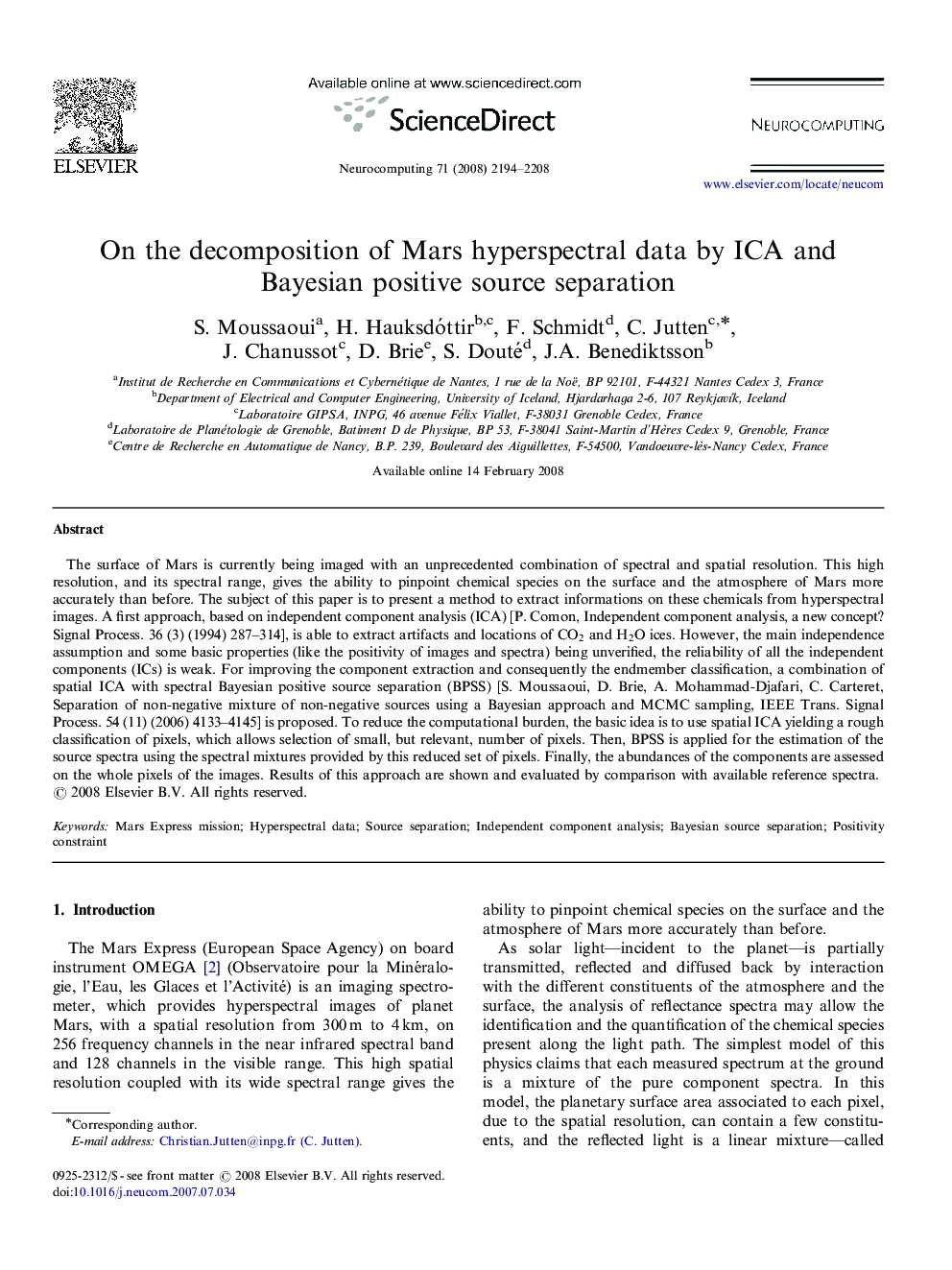| Article ID | Journal | Published Year | Pages | File Type |
|---|---|---|---|---|
| 413053 | Neurocomputing | 2008 | 15 Pages |
The surface of Mars is currently being imaged with an unprecedented combination of spectral and spatial resolution. This high resolution, and its spectral range, gives the ability to pinpoint chemical species on the surface and the atmosphere of Mars more accurately than before. The subject of this paper is to present a method to extract informations on these chemicals from hyperspectral images. A first approach, based on independent component analysis (ICA) [P. Comon, Independent component analysis, a new concept? Signal Process. 36 (3) (1994) 287–314], is able to extract artifacts and locations of CO2CO2 and H2OH2O ices. However, the main independence assumption and some basic properties (like the positivity of images and spectra) being unverified, the reliability of all the independent components (ICs) is weak. For improving the component extraction and consequently the endmember classification, a combination of spatial ICA with spectral Bayesian positive source separation (BPSS) [S. Moussaoui, D. Brie, A. Mohammad-Djafari, C. Carteret, Separation of non-negative mixture of non-negative sources using a Bayesian approach and MCMC sampling, IEEE Trans. Signal Process. 54 (11) (2006) 4133–4145] is proposed. To reduce the computational burden, the basic idea is to use spatial ICA yielding a rough classification of pixels, which allows selection of small, but relevant, number of pixels. Then, BPSS is applied for the estimation of the source spectra using the spectral mixtures provided by this reduced set of pixels. Finally, the abundances of the components are assessed on the whole pixels of the images. Results of this approach are shown and evaluated by comparison with available reference spectra.
